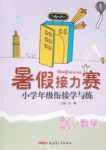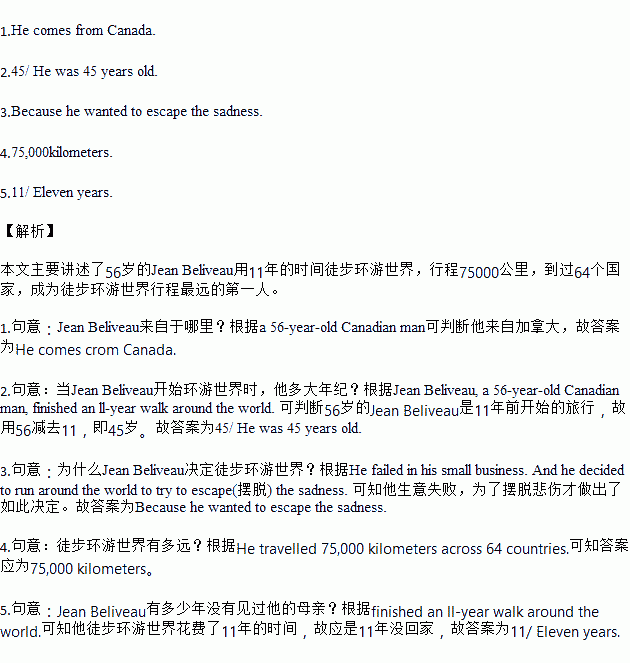题目内容
根据短文内容回答下列问题。
Jean Beliveau, a 56-year-old Canadian man, finished an ll-year walk around the world.
On August 18, 2000, the man left his home. That day was his birthday. He failed in his small business. And he decided to run around the world to try to escape(摆脱) the sadness.
He ran all the way to some places, then he slowed down. He travelled 75,000 kilometers across 64 countries. It would become the longest walk without stopping around the world. More than 100 supporters(支持者) walked the final kilometers with him through the streets.
Over 11 years, he travelled across deserts and mountains. On the way, he met lots of different- things that he won't forget.
1.Where does Jean Beliveau come from?
_________________________________________________________________________
2.How old was Jean Beliveau when he started to travel?
_________________________________________________________________________
3.Why did Jean Beliveau decide to run around the world?
_________________________________________________________________________
4.How far is the walk around the world?
_______________________________________________________________________
5.How many years hasn't Jean Beliveau seen his mother?
______________________________________________________________________
 桃李文化快乐暑假武汉出版社系列答案
桃李文化快乐暑假武汉出版社系列答案 优秀生快乐假期每一天全新寒假作业本系列答案
优秀生快乐假期每一天全新寒假作业本系列答案 暑假接力赛新疆青少年出版社系列答案
暑假接力赛新疆青少年出版社系列答案
